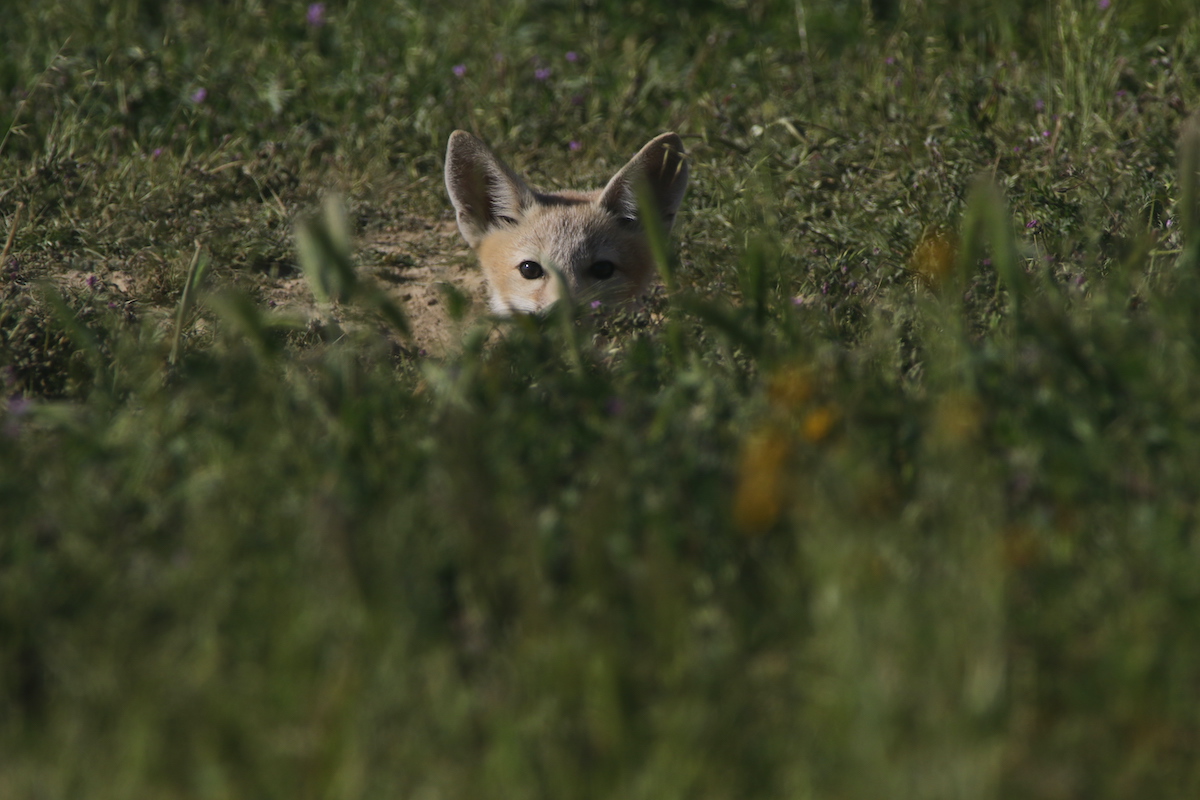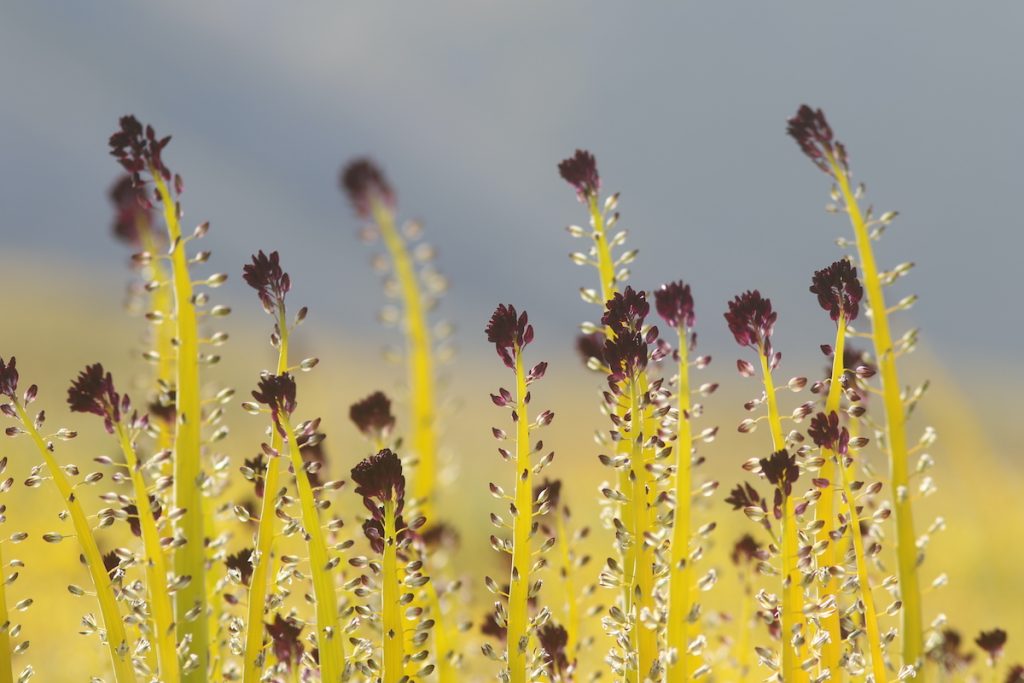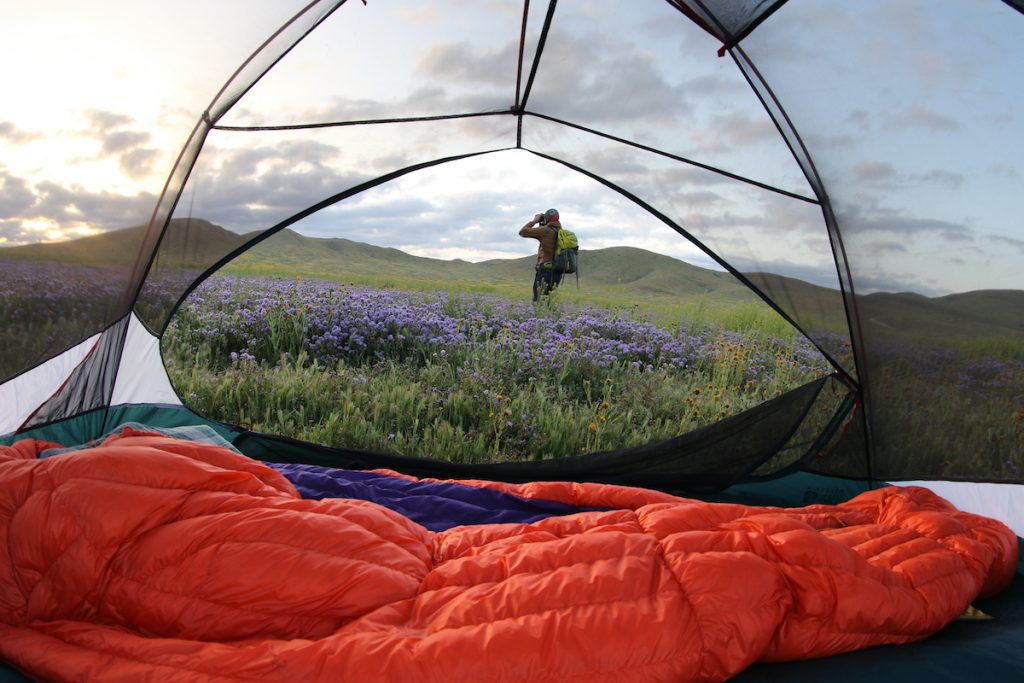Grassland Solitude

From afar, the Temblor Range in the Carrizo Plain National Monument was swept in different shades of yellow. Rancher’s fireweed, goldfields, and hillside daisies brightened the arid mountain biome. From where I stood at the base of the Caliente Mountains looking east, it was the only color on what are typically barren hillsides.
Another super bloom had arrived. Absurd amounts of rain during the winter of 2022/23, along with substantial snowfall, had brought on another spring full of vibrant wildflowers. With solid rain totals and mostly consistent rainfall from November through the end of March, it ended another dreaded drought.
As spring approached, anticipation mounted with each passing week. It felt like a bloom was coming. The Carrizo Plain wasn’t just green, it was acid green. The vegetation was lush and dense. Places where I’d spotted active kit fox, badger, and giant kangaroo rat dens in the past were completely smothered in fresh growth.
Fleeting Natural Wonders
I pulled off Elkhorn Road on the northeast side of the semi-arid grasslands and hiked an old ranch road to the rolling ridge of the Temblors. Up close, a multitude of colors revealed themselves. Blazing stars, California poppies, and Parry’s mallow are native wildflowers that close-up at the end of each day. They don’t begin to open again until the sun hits them the next morning.
However, after walking up to the top of the ridge at 3,600 feet, all the colors, the wildflowers hidden amongst all the yellows started to pop. Valley phacelia was abundant on the hillsides. Chia, blue dicks, and owl’s clover were also there.

One of my favorites though was just starting to bloom. Desert candles were still just getting going in mid-April. Sometimes reaching four feet tall, the yellowish lime-colored stocks were beginning to burst into their beautiful magenta-colored blooms. They looked incredible, standing above the hillside daisies and blazing stars, the perfect blend of yellow, orange, and deep purple popping on the Temblors.
The Waiting Game
Due to all that significant rain, most species of native flora were waist-high, and so thick it wasn’t allowing for much open ground. It made it very tough locating wildlife. That, and lots of visitors enjoying the abundant wildflowers across the Carrizo Plain kept mammals and birdlife hunkered down and/or further out across the expanse of the veld.
Rancher’s fireweed was particularly dense. Places where I’ve located kit fox dens in the past were well hidden this time. I did get lucky, though.
An active kit fox den that was very busy with six pups in 2020, was active once more. In 2021 and 2022, it was not active at all, but I decided to walk up the hill just to be sure during the second week of April 2023. The den was surrounded in the Rancher’s fireweed, but in the middle of it all was a barren patch of dirt. It was busy.
With my binoculars I counted four entry points to the den. All the telltale signs were there. Plenty of flies buzzing around the openings. Leftover prey was scattered about, even a couple of giant kangaroo rat tails were probably nothing more than play toys at that point. And there were no spider webs solidified across the entry points. Kit foxes were underground.

I posted up in the fireweed and sat waiting. All I had on me was binoculars, my camera with a 300mm lens, and some water. After 35 minutes the dad rose above an opening. First there were his ginormous ears, some of the biggest amongst all canids. It was like a periscope rising out of calm seas. However, once his entire head was exposed, he slowly vanished, lowering himself out of sight.
Another 35 minutes passed, and with the same results. Then 15 more minutes past and a cute pup exited the den. It looked about four weeks old, and flopped down in the dirt, sunning the afternoon away. Its dad passed by once, and then another pup rose above ground only to quickly vanish into another entry point. Wildlife is always on its own schedule.
Patience was needed for both another bloom and thriving grassland fauna, but enough rain will always be the ultimate factor. It determines how grassland flora and fauna will fare through the rest of the year.
Locating and photographing that active kit fox den jumpstarted the spring for me. From there, my senses were heightened, and the last of California’s semi-arid grasslands came alive.






